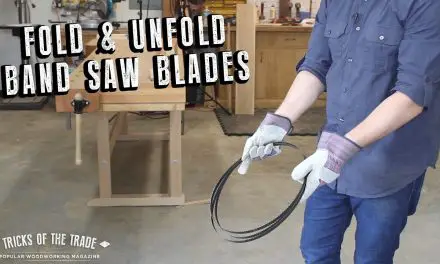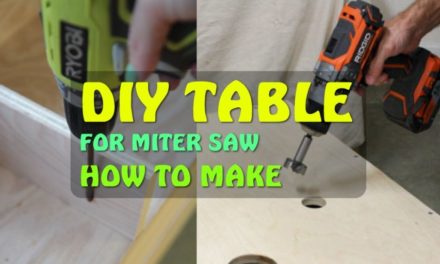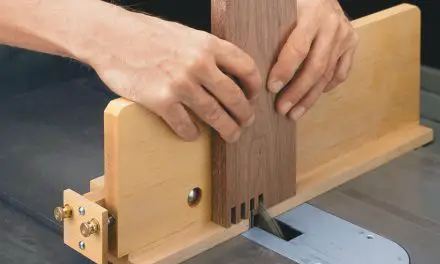We understand that there are several special tools for cutting circles in wood, but that does not make it impossible to create a circle in wood without these tools. The jigsaw is known for its ability to perfect and smooth cuts, but many people are not aware that it can be used to cut a circle in wood.
Also, it is not likely that a DIY enthusiast or a beginner will have all the necessary woodwork tools. Most of all, many beginners find it difficult to cut circles in wood because they don’t have the right equipment. We want you to know that with a jigsaw, you can cut a perfect circle in wood. In fact, this write-up is meant to show you how to cut a circle in wood with a jigsaw. Ensure you choose the right blade for what you want to cut, and you should also make sure that your jigsaw is in top condition.
How to Cut a Circle in Wood with a Jigsaw?
A jigsaw is a great tool for making curves, circles, and other intricate shapes in wood. It can be used to easily cut accurate circles of any size up to a certain diameter. It is important to take your time when using the jigsaw and make sure that you have all of the necessary tools and supplies before starting. This guide will walk you through the steps on how to cut a circle in wood with a jigsaw.
Materials & Tools Needed:
Before beginning, it is important to have all of the materials & tools needed for this task:
– Jig saw; preferably cordless or electric
– Pencil or marker
– Ruler or measuring tape
– Chalk line
– Wood scrap
– Safety goggles and gloves
– Sandpaper for smoothing rough edges (optional)
Step 1: Mark the Circle:
The first step is to decide on the size of your desired circle. The diameter should be within the cutting capacity of your jigsaw. Using a pencil, ruler, or chalk line, mark off the circumference of your desired circle. Make sure that all lines are straight and connect properly with each other in order to create an accurate shape.
Step 2: Cut Out the Circle with Your Jigsaw:
Once you have marked off your desired circle, it’s time to begin cutting out the shape using your jigsaw. Be sure to wear safety goggles and gloves for protection. Start by cutting along the circumference line of the circle and gradually make your way towards the center. Take your time, and make sure that you are using steady movements when operating the saw.
Step 3: Smooth Out Edges:
Now that you have finished cutting out your circle, it’s time to smooth out any rough edges or irregularities with sandpaper (optional). This is an important step as it will ensure that your end product looks professional and neat. Begin by gently sanding around the outside perimeter of your circle in a circular motion until all visible imperfections are eliminated. You can also use a file or other similar tool if desired.
If done correctly, your circle should look even and have a smooth finish.
Step 4: Finish the Project:
Once you have finished cutting and sanding, your project is ready to be used. You can now use it for whatever purpose you intend it for – whether that be painting, staining, or simply displaying.
Cutting a circle in wood with a jigsaw may seem like an intimidating task at first, but with the right tools and supplies at hand it doesn’t have to be. Now that you know the basics of how to cut a circle in wood with a jigsaw, you can confidently make accurate circles of any size up to a certain diameter. Just remember to take your time while cutting and sanding down any irregularities for a professional-looking finish.
Watch More:
Tips on how to properly use a jigsaw:
It is not enough to be able to cut a circle with a jigsaw. You should also know how best to use a jigsaw. That’s why we have given some tips below.
1. Try it with scraps first:
It is good that you understand your jigsaw very well before you start using it on a project. That’s why you must practice with it first if it is your first time. Get a feel of how it works. You should feel the intensity of its vibration so that you’ll know the amount of force you need to hold it in place. Also, you should find out how responsive its start/stop button is. By that, you will understand how many milliseconds it takes to stop when you stop it. The more you understand the jigsaw, the more you’ll get from it.
2. Buy recommended blades:
No matter the quality of your jigsaw, you can’t get much from it if you feed it with low-quality blades. If you can part with some money to buy a great jigsaw, you should also try to buy high-quality blades for great and smooth cuts. In fact, the manufacturers of jigsaws usually recommend the best brand and model of blades for their jigsaws.
Here is why a high-quality blade is a must for you. Cheap blades are not durable. They get dull fast, and you may have to replace them very soon. Here is a helpful illustration. For illustration, let’s assume that a high-quality blade costs $30, and cheap ones cost $10. The recommended high-quality blade may last 5 times longer than the cheap one. That means while someone is using a $30 blade, you may have bought the cheap one 5 times (5 x $10 = $50). So, in the long run, the high-quality blade will cost you less. It will be more cost-effective.
3. Use the right speed:
Jigsaws usually have multiple speeds. Different materials require different cutting speeds. The cutting speed required by acrylic is lower than the cutting speed for metals and wood. So, make sure you know the right cutting speed for each material. If you are confused about it, consult experts. Using the wrong cutting speed will impact the quality of your jobs negatively.
4. Learn what each blade is meant for:
You must have a box of blades for your jigsaw. This is because different blades are meant for different tasks. If you don’t understand what each type of blade is meant for, you will be struggling with your cuts. In fact, you may even be blaming your shoddy jobs on the quality of your jigsaw. You must study the best blade for each type of cut before you start using it.
5. Change or sharpen dull blades quickly:
Once you notice that any blade is dull, you can either sharpen it or replace it. Don’t continue to use it. The problem will continue to get worse. Also, sharpening your blade will only make the blade work for a few months longer, depending on its usage. The most effective solution for a dull blade is a replacement.
If you have been following this article from the beginning, you would have learned how to cut a circle in wood with a jigsaw, and you would have also learned a few tips to make the best use of your jigsaw.



















